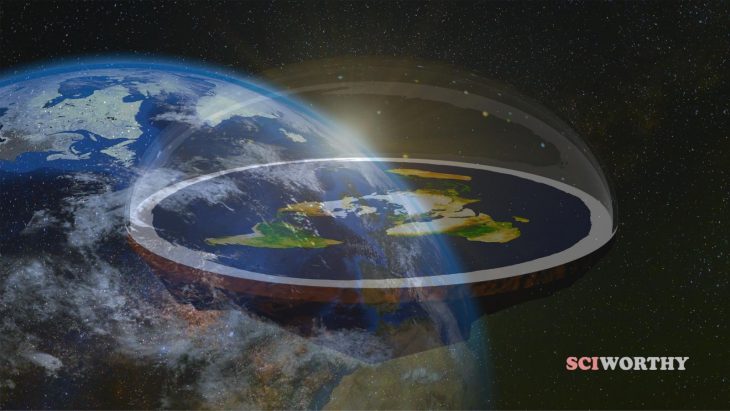A group of scientists who study science communication at Texas Tech University wanted to understand more about the people who accept the Flat Earth Hypothesis. As you might imagine, the Flat Earth Hypothesis contradicts the model of Earth as a spinning, 3-D “oblate spheroid” (an imperfect ball).
In some of their earlier work, they found that after interviewing participants at a major Flat Earth conference, the “vast majority” were convinced of the Flat Earth hypothesis from Youtube videos that they initially sought to debunk. Participants reported having found these videos via Youtube’s recommender, while watching other conspiracy theory videos. The authors of this study built upon these findings to further understand what kind of person is convinced by these arguments.
They defined their hypothesis around the idea that different people respond to media differently, affecting a person’s willingness to accept the Flat Earth Hypothesis. First, they propose that an individual’s personal characteristics — personality, demographics, social circle, and more — may play a role. Acceptance may also be affected by their mental state when watching. They propose that the first two effects work together in a causal loop by both influencing what the person chooses to watch and how it affects them. Media content can also affect more long term aspects of the individual’s personality, and how they interact with media in the future.
Science knowledge, “conspiracy mentality,” and religiosity were measured for this particular study. These were chosen because they have been shown in other studies that they predict whether or not a person accepts scientific explanations. They hypothesized that these characteristics will also influence acceptance (or rejection) of the Flat Earth hypothesis.
Using the Amazon Mechanical Turk, they recruited 402 Youtube users between the ages of 18-60, 57% female and 43% male. The racial breakdown of the group was 76% white, 11% Black, 7% Hispanic, 6% Asian, and 2% Other. The educational breakdown of the participants include 11% high school graduate, 38% completed some college, 35% college graduate, and 16% attending grad school.
Participants were randomly assigned to one of four different possible videos that were about 25-30 seconds long. Three were different clips from a longer popular flat Earth video, each making the case for a flat Earth with a different argument — a conspiracy argument, a religious argument, and a science argument. The fourth video was a “control” about fixing a bathtub faucet.
After watching the video, each participant completed a survey. The participants were asked how “believable,” “convincing,” and “strong” they found the video’s arguments to be. They were also asked their thoughts on the video — which the researchers later coded as “agreed” or “disagreed” — and then asked to provide up to 5 reasons why they think the video is false, and up to 5 for why it might be true. They measured science knowledge using a previously validated scale called the Ordinary Science Intelligence Scale, which was set up like a science quiz. They measured “conspiracy mentality” using a scale developed in 2013 that allowed participants to rate how much they agreed or disagreed with certain claims that were common to many conspiracy theories. Lastly, they measured religiosity by asking the participants about religious practices and beliefs.
To analyze the survey results, the scientists used a statistical method called Generalized Linear Modeling, which is useful for large and complex datasets with lots of interacting features. They found statistically significant effects (meaning not due to chance) for a possible interaction between scientific knowledge, conspiracy mindset, and how high the viewer rated the video on the strength of it’s argument. None of the demographic features (race, gender, etc) or religiosity predicted acceptance of flat Earth content.
It turns out, most of the study participants found the videos to be unconvincing, scoring them very poorly in terms of argument strength (an average of 14/100). They hypothesized that one video may not have been enough to simulate the experiences of Flat Earth supporters, who often viewed multiple videos before being convinced. Conspiracy thinking strongly predicted that participants would score the video higher on argument quality. But, the higher their science knowledge scores, the lower they rated the Flat Earth argument quality — even if they were prone to conspiracy thinking.
The researchers noted a few limitations of the study — showing only one video may not be realistic. Further, the Mechanical Turk could have biased the sample set toward atheists and tech workers. Also, measuring only three variables – conspiracy mentality, religiosity, and science knowledge — obviously limits the range of human characteristics that could be explored in this type of study. They suggest more complex experiments in the future.


